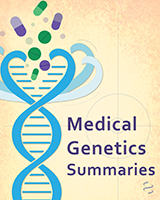| CYP2C19 ultrarapid or rapid metabolizer | Avoid amitriptyline usec
Classification of recommendationd: Optional | Consider alternative drug not metabolized by CYP2C19c,e
Classification of recommendationd: Optional | Consider alternative drug not metabolized by CYP2C19 c,e
Classification of recommendationd: Optional | Avoid amitriptyline usec
Classification of recommendationd: Optional |
| CYP2C19 normal metabolizer | Avoid amitriptyline use. If amitriptyline is warranted, consider titrating to a higher target dose (compared to normal metabolizers)f,g
Classification of recommendationd: Strong | Initiate therapy with recommended starting doseh
Classification of recommendationd: Strong | Consider a 25% reduction of recommended starting dosef,h
Classification of recommendationd: Moderate | Avoid amitriptyline use. If amitriptyline is warranted, consider a 50% reduction of recommended starting dosef,h
Classification of recommendationd: Strong |
| CYP2C19 intermediate metabolizer | Avoid amitriptyline usec
Classification of recommendationd: Optional | Initiate therapy with recommended starting doseh
Classification of recommendationd: Strong | Consider a 25% reduction of recommended starting dosef,h
Classification of recommendationd: Optional | Avoid amitriptyline use. If amitriptyline is warranted, consider a 50% reduction of recommended starting dosef,h
Classification of recommendationd: Optional |
| CYP2C19 poor metabolizer | Avoid amitriptyline usec
Classification of recommendationd: Optional | Avoid amitriptyline use. If amitriptyline is warranted, consider a 50% reduction of recommended starting dosef,h
Classification of recommendationd: Moderate | Avoid amitriptyline usec
Classification of recommendationd: Optional | Avoid amitriptyline usec
Classification of recommendationd: Optional |
